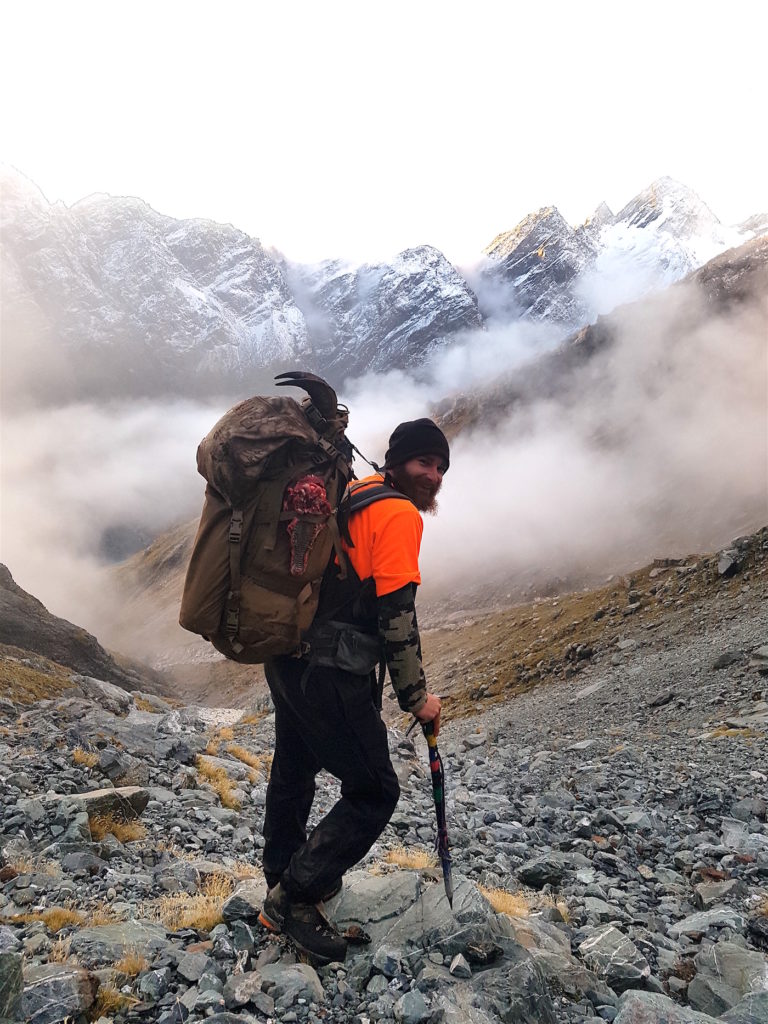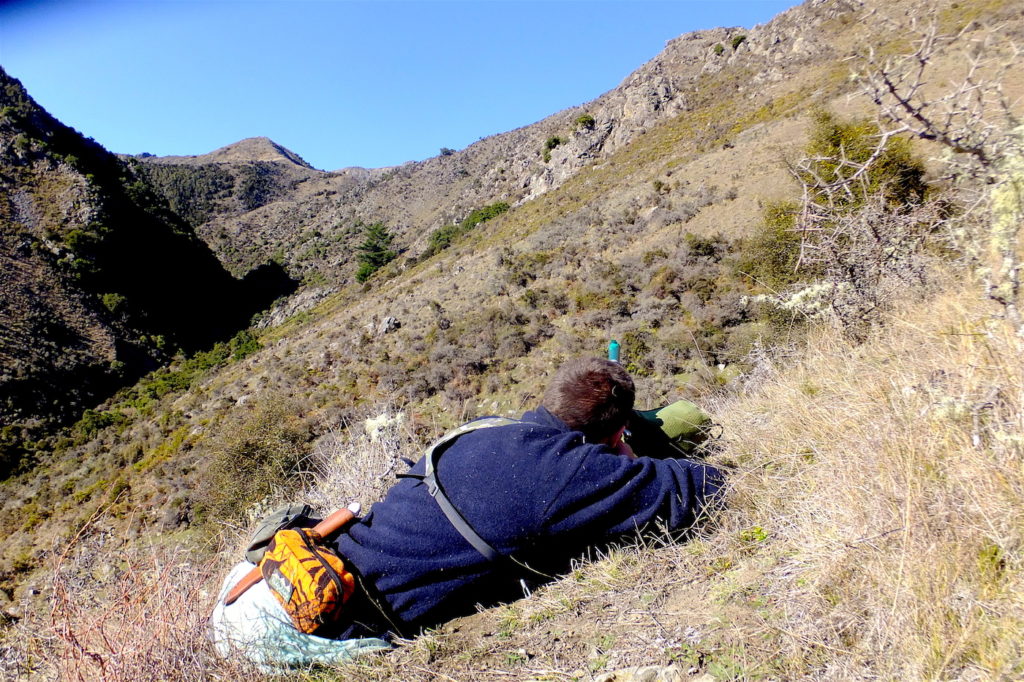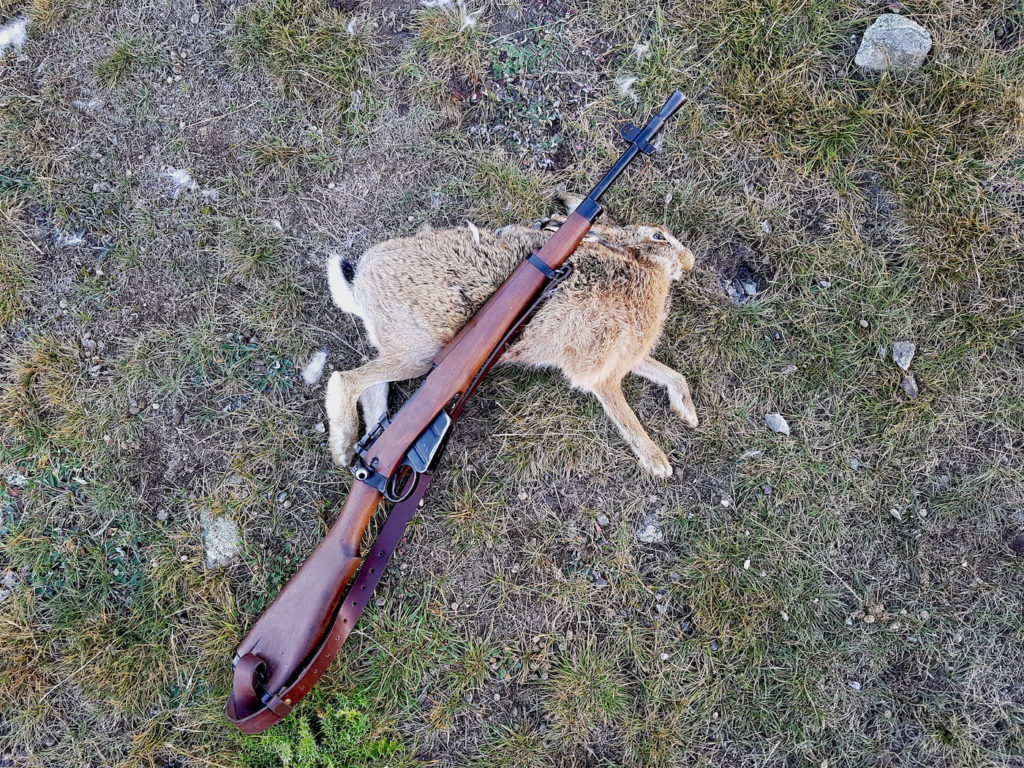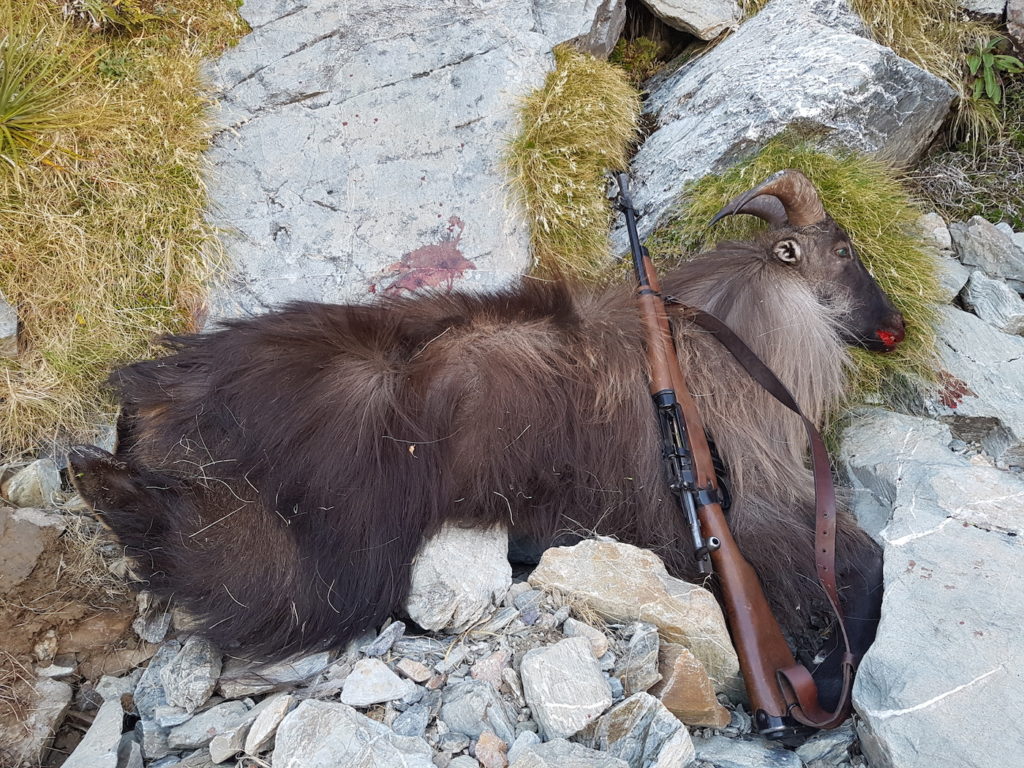It goes without saying that a little goes a long way when it comes to preparing for a hunt, especially a mountain hunt where your gear and fitness can have a significant impact on your success and enjoyment. Over the last couple of years of guiding and through my personal hunting, I’ve noticed some things that work well, and more importantly, the things that don’t. As a guide, I have the privilege of getting to ‘test’ and view a lot more gear and ideas than I would ever personally be able to. These are my observations, opinions, and advice, and at the end of the day that’s all they are.
Being a successful mountain hunter can mean a lot of things, but generally you will need the right gear, shooting skills, and a positive physical and mental condition. When all these factors are combined, things can seem ‘easy’ and you will have success no matter how your hunt pans out.
 Spending money on a good pack is critical if you’re a dedicated mountain hunter.
Spending money on a good pack is critical if you’re a dedicated mountain hunter.
Equipment
Currently the modern hunter has more gadgets and gear available to him than he knows what to do with. I’m not a tech guy — nor will I ever be — and in the real wilderness, I think it’s best to go as simple as possible with gear. For mountain hunts, there are a few pieces of equipment that are worth investing in as they’re the difference between success and failure and at times even life and death. Then there are a whole lot of gadgets that do nothing but waste money and time. My most important pieces of gear are rain gear and boots. A good pack is next. In my opinion, you can get by with budget friendly options for everything else until you can afford ‘better’ equipment.
Rain gear has come a long way in the last couple of decades, and we now have a huge array of options. I’m not going to go into detail regarding brands but to sum it up, I now go for durability and water-resistance over breathability and weight. This may be a bit against the grain of current thinking, but generally the most breathable rain gear out there is less durable and just does not stack up when you are hunting hard. Obviously this depends a lot on the terrain you’re in, but if you’re heading to a wet environment (Coastal Alaska/BC or the West Coast of NZ) when getting wet and cold can become serious, I would suggest the heaviest-duty rain gear you can find. I have seen lightweight gear fall apart quickly or simply fail and leak. I generally carry two jackets now on backpack trips (a heavy-duty jacket for wearing while hunting and a lighter weight one for around camp). Long-cut rain jackets or high bib pants are a must for cold and wet conditions. Without these you have a gap in your rain gear system and will soon get wet around the waist/down your ass while moving and sitting in the rain.
If you’re going on a real mountain hunt (and I mean MOUNTAINS), you need real boots. There’s a trend toward lightweight gear in all aspects of hunting, and I went down this route for a couple of years. Quality boots are one thing I would never compromise on. Full leather, and with a good shank. Everyone has brands they prefer but make sure they fit well and you have used them before you set off on a ten-day hunt. I use ¾ or full-shank boots for nearly all my hunting. I prefer a stiff boot for foot protection, climbing ability, and support under heavy loads. Stiffer boots are also much more efficient when climbing, as all your energy is put into climbing as opposed to flexing your boots. Some people get away with wearing sneakers or running shoes. I personally don’t advise people to use these in tough country as you can end up with injuries quite easily. Nothing will ruin a hunt faster than broken boots or feet. Most high-end European and some American boot manufacturers make many models that are well-suited to the mountain hunter. It should be noted that the American brands that make true mountain boots, usually outsource the boot manufacturing to European boot makers.
A good pack can seem expensive, but it comes down to your intended uses. If you are doing one backpack hunt a year you can get away with an ‘average’ pack and some discomfort for a while. If you’re wearing your pack 100+ days per year you will soon get sick of one that isn’t perfect for your body.

Fitness
Training to hunt has become quite the craze, especially across North America, and it’s great to see people putting considerable effort into their training. Like most guides I am in a position where I generally don’t need to train because I’m hunting often and keeping fit by actually hunting. One of the biggest things I see people miss with their training is ‘real world’ experience. This is difficult for people who live in areas with no hills or mountains, but I strongly suggest getting out with a pack on your back into the hills as much as possible–even if it means driving a long way to get there. ‘Mountain fit’ is vastly different from ‘gym fit.’
This is very noticeable in people who hunt a lot. There are people out there who don’t look particularly fit but will kick ass on the mountain because that’s what they do regularly, and there are also guys that look very fit but struggle on the mountains. Remember that mountain hunting is an endurance sport, not a strength or power sport, and this should reflect how you train. Being fit will not only make your hunt easier physically, it also greatly reduces chances of injury and allows you to make better decisions in the hills. Being tired and worn out really impacts mental judgement.
Walking in the mountains, just like everything else, is a skill. The only way to get better at walking is to walk! Not on a track, game trail, or path. Get out into the rough country with a light pack; this is the best training you can do. The biggest factor I see hunters struggle with is moving quickly and safely through difficult terrain. Many hunters I see are wasting tons of energy with the way they move, which is very sapping on both mind and body. How many times have you seen a wild animal stumble or fall?
It’s difficult to explain how to walk in rough terrain, and I feel it is something that must simply be learned through experience, and after a while it just becomes automatic and you don’t even look or think where to place your feet. Being able to move efficiently through the mountains is far more important than how much you can deadlift — trust me!
I am also a strong believer in ‘total weight’. That amounts to you plus your pack. Counting ounces has become a big trend, but body weight is a very crucial factor. Most guys that walk a lot are small. The smaller you are, the less food you generally need to keep going on a hunt, and therefore you can tote a lighter pack. Also in unstable terrain, total weight is a significant factor: think loose rocks and poor footing. I’m not suggesting anyone go out on some crazy weight loss diet, but it is something worth considering — at least before you spend $5k to lose five ounces off your rifle when you might have five pounds on your waist that will be far cheaper to trim!
At the end of the day, any training is better than none and a little can go a long way to make your hunt easier on yourself and more successful. Fitness is only one factor toward being a successful mountain hunter, but don’t forget to put time into other aspects of preparation as they can be equally important.

Shooting
As a guide, a missed shot can be one of the most frustrating things on a hunt; all the hard work to get into a good position and nothing to show for it. This is difficult for any hunter to deal with, especially if you have spent a lot of time/money/effort on getting to that shot position — which is normally the case. A wounded animal is an even more frustrating situation. There are an enormous number of risks that go into making a good shot, but good gear and practice can pacify many of them.
Rangefinders are pretty much standard practice now and remove all doubts about what pin to employ. Modern, flat-shooting calibres, good optics, and drop charts can make a 400-yard shot seem easy, yet missing is still common on mountain hunts. I personally try to keep all shots within 350 yards and have only had two hunters take an animal beyond that. I am not against long-range hunting as such (I have shot animals at over 1000 yards) but generally most people are just not ready to make those shots on a trophy animal. It all comes down to practice. Everyone knows how to shoot off a bench at 100 yards. But how often does a shot like that happen in the field?
Nearly every single shot I have taken on an animal is on some degree of angle, and often in some weird-ass position where you’re half inside-out trying to hold on to the mountain. That’s the reality of hunting the mountains. Things that I see contribute to most misses are: too much gun and poor technique. The average person (myself included) can’t comfortably shoot a lightweight magnum calibre mountain rifle in most field positions. This is where muzzle breaks and suppressors come in. They make all the difference on big magnums, and I strongly suggest one if you don’t already have one fitted. We are lucky in NZ that suppressors are easily available, and ALL the rifles I supply for hunters are suppressed.
I started off big game hunting with a light .270 with a 20” barrel as a scrawny 14-year-old. I soon learned how not to shoot! I blamed everything: rifle ammo, scope, etc., but at the end of the day I didn’t like pulling the trigger and that was the problem. After that I upgraded to a .243. Slowly I learned to shoot again and with my brother (shooting a .223), became very proficient at taking awkward shots; uphill, downhill, standing, left-handed — you name it, we practiced it. A .243 is a small calibre, but I have seen more wounded animals with the bigger guns; shot placement is the MOST crucial factor.
Shooting in the field is a skill that must be learned. Practice — and practice alone — will help your shooting. Sighting-in your rifle off a bench is common sense, but once you have your setup shooting how it should, leave the bench behind. You will not learn how to shoot game shooting off a bench. Dry-firing is great practice to learn trigger control and breathing as well, but learning how your rifle recoils and behaves in field positions must be learned.
The best practice is small game shooting. Take your big game rifle out and shoot some small game like rabbits or coyotes. Sounds easy, right? Even at close ranges, shooting small game consistently with a big gun is difficult and you will soon learn how to shoot. Leave the bipod at home and practice field positions. Sitting is the most useful and accurate position you will use in the hills. Shooting prone is more accurate, yes, but not often applicable in a real mountain hunting situation. When you can hit a rabbit every time at 50-300 yards, then you can worry about the long range stuff.
The same goes for bowhunting, and I know first-hand how frustrating poor shooting and technique can be. I have shot only a few animals with the bow and have a lot to learn with shooting. I have made the classic mistakes of not getting setup properly and learning how to shoot before hitting the field. Consequently, I have missed more bull tahr than most people have even stalked — over 20 now; not a good statistic! I recommend the same advice as for rifle shooting, but with the added advice of getting set up properly; this is a big problem especially in places like NZ, where there are very little in the way of bowhunting or archery stores. I advise going to see a professional bow shop; even it costs a lot, it will save you money down the track.
The old aim-small, miss-small saying really does work. My father always told me ‘If you’re any good, you shouldn’t be shooting them in the head. You should be shooting them in the eye.”

Mental Attitude
A hunter’s mental toughness — or attitude — is by far the biggest factor in enjoyment and success on the mountain. Mountain hunting pushes you, physically and mentally, harder than nearly any other activity in the world.
How will you behave when you miss a 100-yard shot? How will you feel when it rains for five days straight? When you fall in a river and all your gear is wet? When you twist your ankle on the first day? When you can’t walk anymore but camp is three hours away?
These are all things that can and do happen, and it is how you react when things don’t go according to plan that decide whether your hunt is enjoyable or not. Rarely does it all go as planned. I’ve seen hunters come away from a hunt feeling unhappy despite taking multiple record-book animals, and I’ve also seen hunters at the end of a hunt without firing a shot who have had the times of their lives. It all comes down to expectations and attitude.
Success means a lot of different things to different people, and laying out what you want to achieve from a hunt before you plan it is very important. If you’re going on a guided hunt, make it very clear at the beginning to your guide/outfitter what YOU want from the hunt and WHY. This is a very big part of being in the right mental state on a hunt.
Mental toughness is something that can’t be bought; it must be earned the hard way. The human mind is an amazing thing — and always remember, the body does what the mind tells it to do. If you tell yourself you can’t walk anymore, then you are correct. If you tell yourself you’re just warming up, who knows how far you can go!

One thing I recommend to guys starting out is to do some hard yards as we’d say in NZ. Spend a night out in the bush with no gear. Do a day’s walk without food. When that big storm comes through, get out amongst it and test your gear and yourself. Obviously, I don’t want anyone to go out and hurt themselves so try and test these things in a controlled manner or have someone keep track of you. This is where you should be combining your fitness and mental training into one. The harder — mentally and physically — your training is, the easier your hunt will be.
These are a few things I’ve picked up through years of experience. There are, no doubt, volumes of additional useful information for the mountain hunter, and other ideas that may contradict the aforementioned ones. However, I believe these to be a useful start which any mountain hunter would do well to heed.

